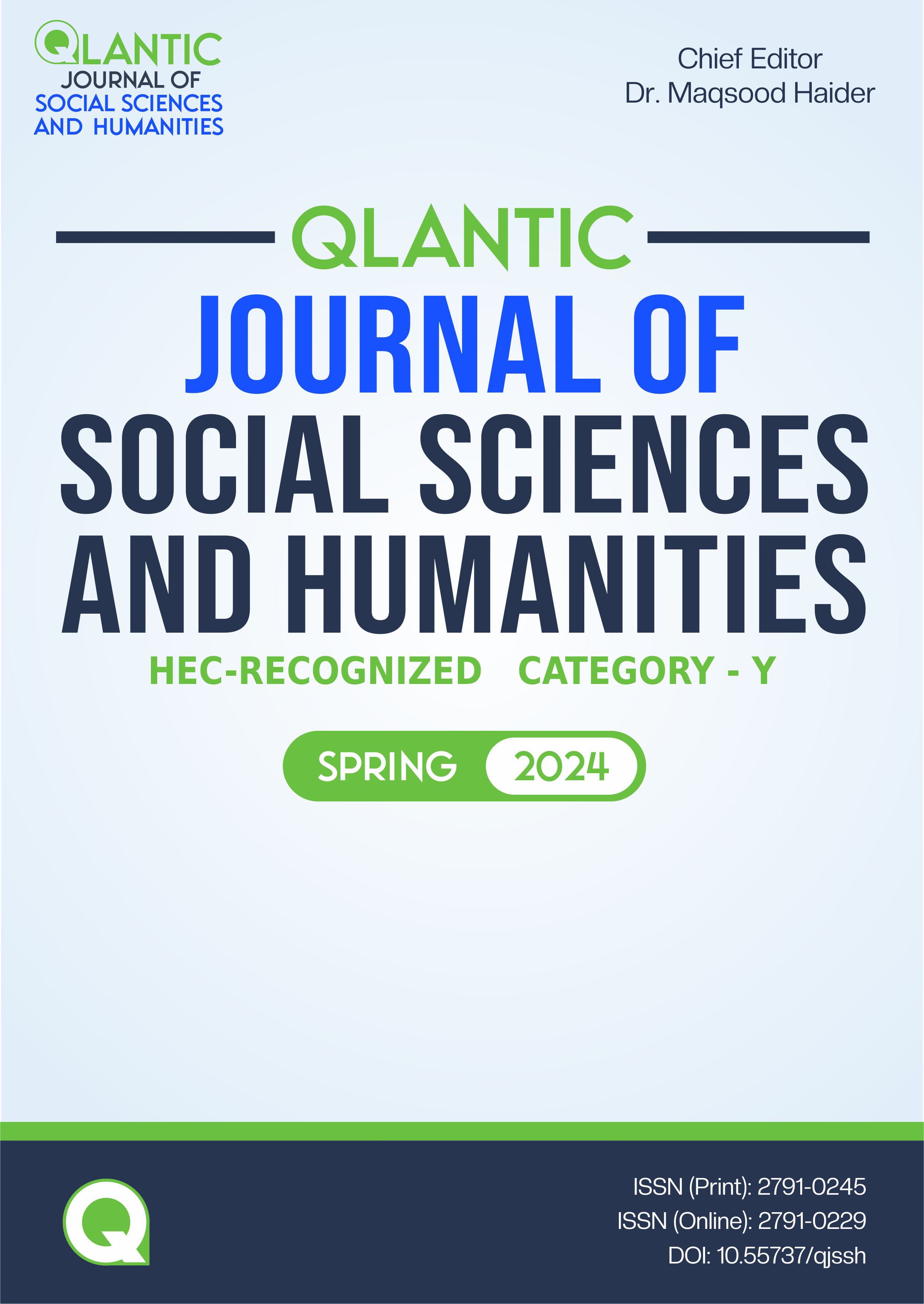Exploring the Barriers to Intercultural Communication among the Students at the University of Lahore
DOI:
https://doi.org/10.55737/qjssh.513497366Keywords:
Barriers to Intercultural Communications, Anxiety, Ethnocentrism, Stereotypes and Prejudices, Cultural BackgroundsAbstract
The aim of the study was to explore the barriers to intercultural communication among the students of The University of Lahore in Pakistan. The study was based on qualitative and quantitative research. The data was collected by conducting interviews, and questionnaires were circulated among the students of The University of Lahore. The research revealed that the students at The University of Lahore faced barriers in their intercultural encounters. The barriers mostly faced by the students were anxiety, assuming similarities instead of differences, language problems, stereotypes and prejudice, and misinterpretation of non-verbal communication. Ethnocentrism, one of the major barriers, was not faced by any student of the university. These problems in intercultural communication at the university occurred due to the different cultural, political, and historical backgrounds of the students. The strategies that help in making intercultural communication are acknowledging the differences, focusing on behavior, promotion of tolerance, and development of intercultural sensitivity.
References
Ajmal, M., Salahuddin, A. ., & Rehman, R. (2023). Adapting Grice Maxims in Teaching of Writing at Undergraduate Level: A Case Study. Pakistan Journal of Humanities and Social Sciences, 11(1), 233–242. https://doi.org/10.52131/pjhss.2023.1101.0345
Allwood, J., & Schroeder, R. (2000). Intercultural communication in virtual environment. Journal of Intercultural Communication, 2(2), 1-14. https://doi.org/10.36923/jicc.v2i2.375
Barna, L. M. (1994). Stumbling blocks in intercultural communication. Intercultural communication: A reader, 6, 345-353.
Barna, L. M. (1997). Stumbling Blocks in Intercultural Communication. In Samovar, Larry A. and Porter, Richard E. ( Ed ): Intercultural Communication – A Reader 8:th edition . Wadsworth, California: USA. https://api.semanticscholar.org/CorpusID:51691145
Boucher, J. D. (1974). Culture and the expression of emotion. International and Intercultural Communication Annual, 1, 82-86.
Cohen, D. (1998). Culture, social organization, and patterns of violence. Journal of Personality and Social Psychology, 75(2), 408–419. https://doi.org/10.1037/0022-3514.75.2.408
Gkrimpizi, T., Peristeras, V., & Magnisalis, I. (2023). Classification of barriers to digital transformation in higher education institutions: Systematic literature review. Education Sciences, 13(7), 746. https://doi.org/10.3390/educsci13070746
Gudykunst, W. B., & Kim, Y. Y. (1992). Communicating with strangers: An approach to intercultural communication (Vol. 19). New York: McGraw-Hill.
Gudykunst, W. B., & Mody, B. (Eds.). (2002). Handbook of international and intercultural communication (2nd ed.). Thousand Oaks, CA: Sage. publications, 2002. 606 pages. Journal of Business Communication, 40(3), 237-240. https://doi.org/10.1177/002194360304000304
Jandt, F. E. (Ed.). (2004). Intercultural communication: A global reader. Sage.
Jandt, F. E. (2017). An introduction to intercultural communication: Identities in a global community. Sage Publications.
Keles, Y. (2013). What intercultural communication barriers do exchange students of Erasmus program have during their stay in Turkey, Mugla? Procedia - Social and Behavioral Sciences, 70, 1513-1524. https://doi.org/10.1016/j.sbspro.2013.01.219
Neuliep, J. W. (2012). The relationship among intercultural communication apprehension, ethnocentrism, uncertainty reduction, and communication satisfaction during initial intercultural interaction: An extension of anxiety and uncertainty management (AUM) theory. Journal of Intercultural Communication Research, 41(1), 1-16. https://doi.org/10.1080/17475759.2011.623239
Rida, R. & Ghani, N. A. (2022). A Critical Discourse Analysis of Khalil Ur Rehman’s speech in a live TV social talk show on the topic ‘‘Feminism and Aurat March’’. Pakistan Journal of Society, Education and Language 9 (1). 394-404. https://pjsel.jehanf.com/index.php/journal/article/view/1047
Samovar, L. A., & Porter, R. E. (1997). Intercultural Communication: A reader (8:th Ed.). Belmont,Ca: Wadsworth Publishing company.
Sarwar, M., & Ghani, N. A. (2024). To Be or Not to Be: Undergraduate ESL Learners’ Attitudes Towards Code-Switching. Literary Voice, 154-166. https://doi.org/10.59136/lv.2024.2.2.16
Sugawara, Y., & Peterson, C. (1994). Communicative Competence: The Cultural Factor in Language Training. Fred E. Jandt, California State University, San Bernardino.
Published
Issue
Section
License
Copyright (c) 2024 Rida Rehman, Nadia Abdul Ghani

This work is licensed under a Creative Commons Attribution-NonCommercial 4.0 International License.





